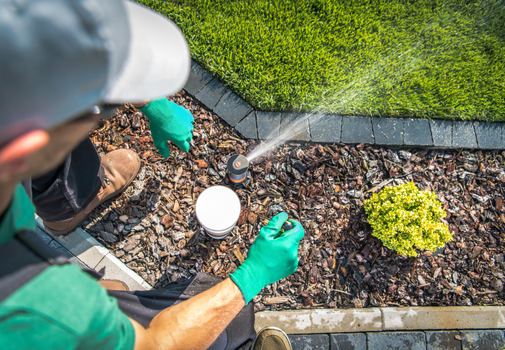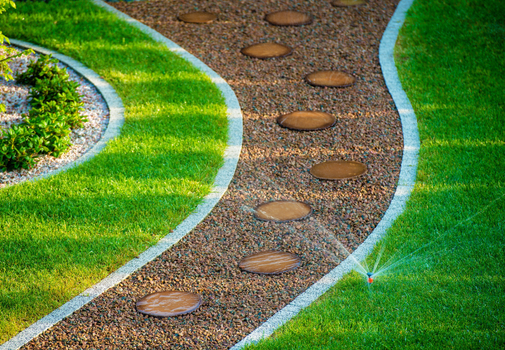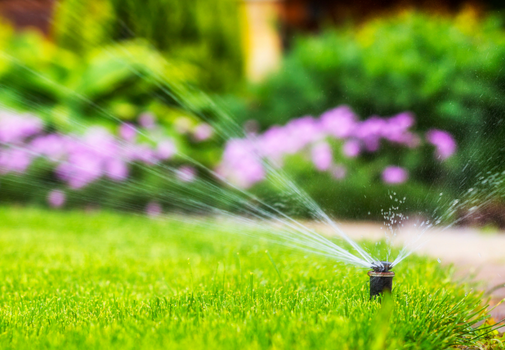Ohio homeowners know that keeping a lawn green and healthy during the growing season takes more than just regular mowing and fertilizing. One of the most important, yet often misunderstood, elements of lawn care is watering. Proper watering practices directly impact your lawn’s root strength, color, and overall ability to withstand stress. Knowing how often to water grass and when is the best time to water your lawn in Ohio can help you maintain a lush, vibrant yard without wasting water or encouraging disease. In this guide, we’ll break down the ideal watering schedule for Ohio lawns and answer common questions like how long to water grass, how often you should water your lawn, and how to adjust based on weather and grass type. Have more questions? Feel free to reach out to us today at (440) 888-1884.
Understanding Ohio’s Climate and Lawn Needs
Ohio experiences a range of temperatures and rainfall levels throughout the year. Summers are generally warm and humid, with average highs in the 80s and occasional dry spells. These conditions can stress grass and make proper watering crucial. Cool-season grasses such as Kentucky bluegrass, perennial ryegrass, and fescue are common in Ohio lawns. These grass types thrive with consistent moisture but can quickly suffer in extreme drought or heat without the right watering schedule.
While all of Ohio experiences similar seasonal changes, homeowners in Southern Ohio may find that their lawns require more frequent monitoring during extended summer heat waves. Meanwhile, Northern Ohio lawns may benefit from slightly cooler nighttime temperatures, allowing the soil to retain moisture longer. Microclimates in your yard also play a significant role. Shaded areas under trees or beside fences often stay moist longer than sun-exposed zones, so you may find yourself adjusting watering frequency even within the same property.
How Often Should You Water Your Lawn?
As a general rule, lawns in Ohio need about 1 to 1.5 inches of water per week, either from rainfall or irrigation. This amount helps keep grass healthy and encourages deep root growth, which improves drought resistance. During hot and dry periods, you may need to water more frequently to make up for the lack of rain.
A good starting point is watering your lawn two to three times per week, depending on recent rainfall, soil conditions, and the specific grass variety. It’s better to water deeply and infrequently than to water a little every day. Shallow watering leads to shallow roots, which makes your lawn more vulnerable to heat stress and weeds.
Signs Your Lawn Needs Water
Even with a schedule in place, it’s important to watch your lawn for signs that it needs water. Some indicators include:
- Grass blades appear dull, bluish-gray
- Footprints remain on the lawn after walking across it
- Soil feels dry several inches below the surface
- The lawn loses its springiness and looks flat
If you notice these signs, it’s likely time to increase your watering frequency or adjust your watering time to ensure your lawn gets the hydration it needs. Prolonged dryness can lead to brown patches, stunted growth, and an increased vulnerability to weeds and pests. Walk your lawn weekly, especially during hot or dry spells, to monitor subtle changes in color and texture.
If the grass doesn’t bounce back after being stepped on or shows uneven coloring across different areas, it’s often an early warning sign of dehydration. Responding promptly can prevent long-term damage and keep your turf lush and resilient.
When Is the Best Time to Water Your Lawn?

One of the most frequently asked questions: When is the best time to water your lawn? The answer is early in the morning, ideally between 5 a.m. and 9 a.m. Watering in the morning allows moisture to soak into the soil before the heat of the day causes evaporation. It also reduces the chance of fungal diseases that can occur when lawns stay wet overnight.
Avoid watering in the evening or at night, as this can leave your lawn damp for too long, promoting mold, mildew, and other lawn diseases. Watering during the heat of the day is also less effective, as much of the water will evaporate before it can reach the roots.
How Long Should You Water Your Lawn?
Now that you know the best time to water grass, the next question is how long you should water your lawn? The goal is to provide enough water to soak the top 6 to 8 inches of soil, which is where most grass roots grow. For most sprinkler systems, this takes about 20 to 30 minutes per session. However, this can vary depending on your system’s water pressure, sprinkler type, and soil composition.
A simple way to check how long to water grass is by placing a few empty tuna cans or similar containers around your lawn. Run your sprinklers and time how long it takes to fill the cans to about 1 inch. This gives you a baseline to determine watering time.
Tips for Efficient Lawn Watering
To make the most of your watering efforts and support a healthier lawn, consider these tips:
- Use a rain gauge to monitor rainfall and adjust your watering schedule accordingly
- Water less often but more deeply to encourage root growth
- Avoid watering on windy days to prevent uneven coverage
- Check your sprinkler system for leaks or misaligned heads
- Aerate your lawn in spring or fall to improve water penetration
- Mow at the proper height to reduce water evaporation from the soil
Consistent monitoring of your lawn’s condition is just as important as sticking to a set schedule. Factors like recent rainfall, daytime temperatures, and changes in soil texture can all influence how much water your lawn truly needs. Take time each week to inspect high-traffic areas or sun-exposed spots for signs of dryness or stress. Also, consider using tools like soil moisture meters to gauge how deeply water is penetrating. These small habits make it easier to fine-tune your approach, ensuring that you’re not just watering routinely, but watering effectively for a stronger, more resilient lawn.
Watering New Grass vs. Established Lawns
Newly seeded or sodded lawns require a different approach than established ones. During the first few weeks, new grass should be watered lightly once or twice per day to keep the top layer of soil consistently moist. As the grass takes root, gradually reduce the frequency and increase the watering depth. This encourages roots to grow deeper into the soil, making your lawn more drought-tolerant over time.
Common Mistakes to Avoid
Watering may seem simple, but common mistakes can compromise the health of your lawn. Here are a few pitfalls to avoid:
- Overwatering: Too much water can suffocate roots and promote fungal disease
- Watering too frequently: Leads to shallow roots and greater dependence on irrigation
- Watering at the wrong time: Reduces efficiency and increases the risk of disease
- Ignoring rainfall: Leads to waste and runoff
It’s also important to avoid watering during peak heat hours, as much of the water can evaporate before reaching the roots. Using a poorly calibrated irrigation system may also result in uneven coverage, leading to dry patches and waterlogged areas that stress your lawn.
Customizing Your Watering Schedule

Every lawn is a little different, and a successful watering plan depends on factors like soil type, grass species, and sun exposure. Sandy soils drain quickly and may need shorter, more frequent watering, while clay soils hold moisture longer and benefit from less frequent watering sessions. Shady areas will dry out more slowly than sunny spots, so they may need less water overall.
Keeping a close eye on your lawn’s condition and adjusting your watering routine accordingly is key. Using smart irrigation controllers or moisture sensors can help automate and fine-tune your watering schedule for even better results.
For homeowners managing their irrigation, tools like hose timers, oscillating sprinklers, and soil moisture meters offer a practical, cost-effective way to maintain a healthy lawn. Smart irrigation systems are also increasingly popular, adjusting water delivery based on real-time weather data and lawn conditions. For those with larger properties or intricate landscaping, a professional lawn care provider can design a custom watering system that ensures even coverage and optimal timing across all zones. This kind of expert input is particularly valuable if your yard includes slopes, garden beds, or high-traffic areas that require extra attention.
Contact Unique Landscaping Today!
Understanding how often you should water your lawn in Ohio is essential for maintaining a healthy, green yard throughout the growing season. Aim for deep, infrequent watering sessions in the early morning hours to give your grass the best chance to thrive. By knowing how long to water grass and when is the best time to water your lawn, you can save water, reduce stress on your lawn, and enjoy a vibrant outdoor space all summer long. If you’re ever unsure or want professional guidance tailored to your specific lawn, consider reaching out to a local lawn care expert for personalized advice. Unique Landscaping offers free consultations and customized lawn care solutions. Let our knowledgeable team help you build a watering strategy that keeps your lawn looking its best, season after season.

